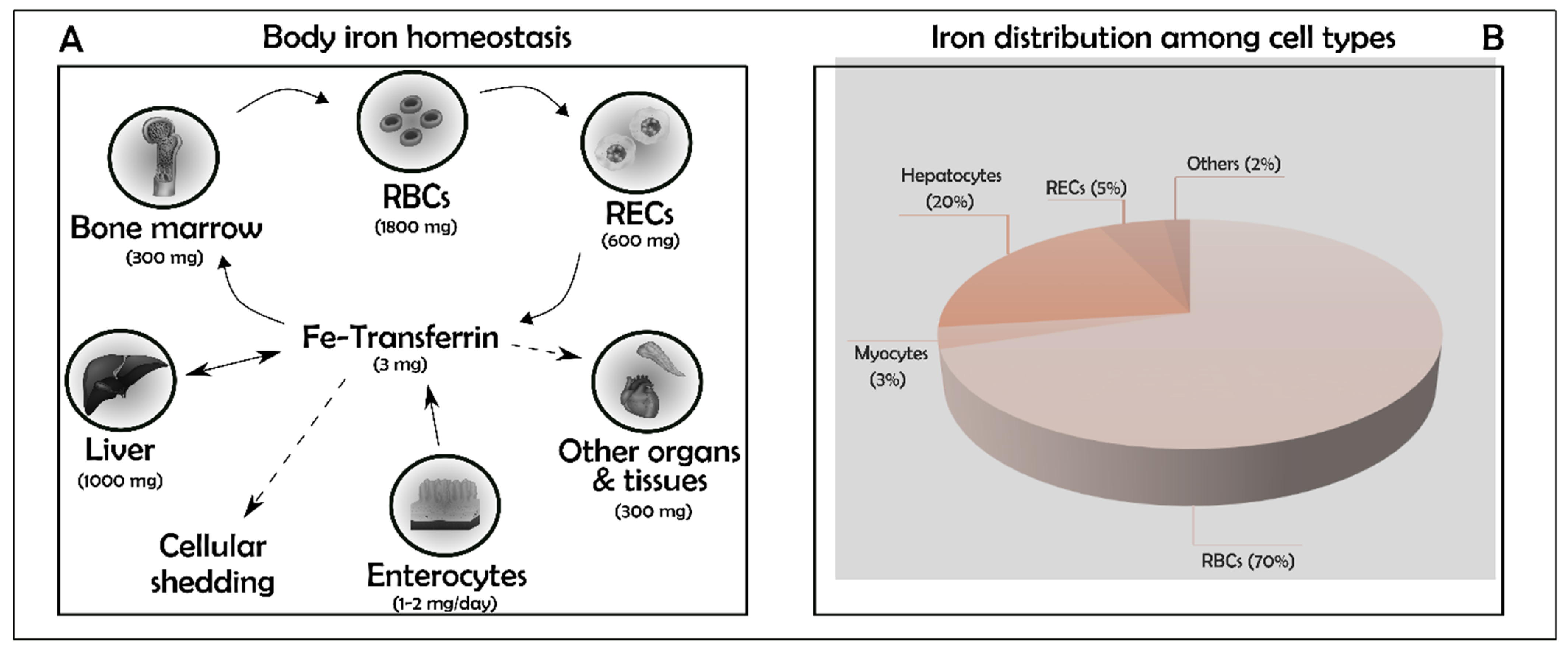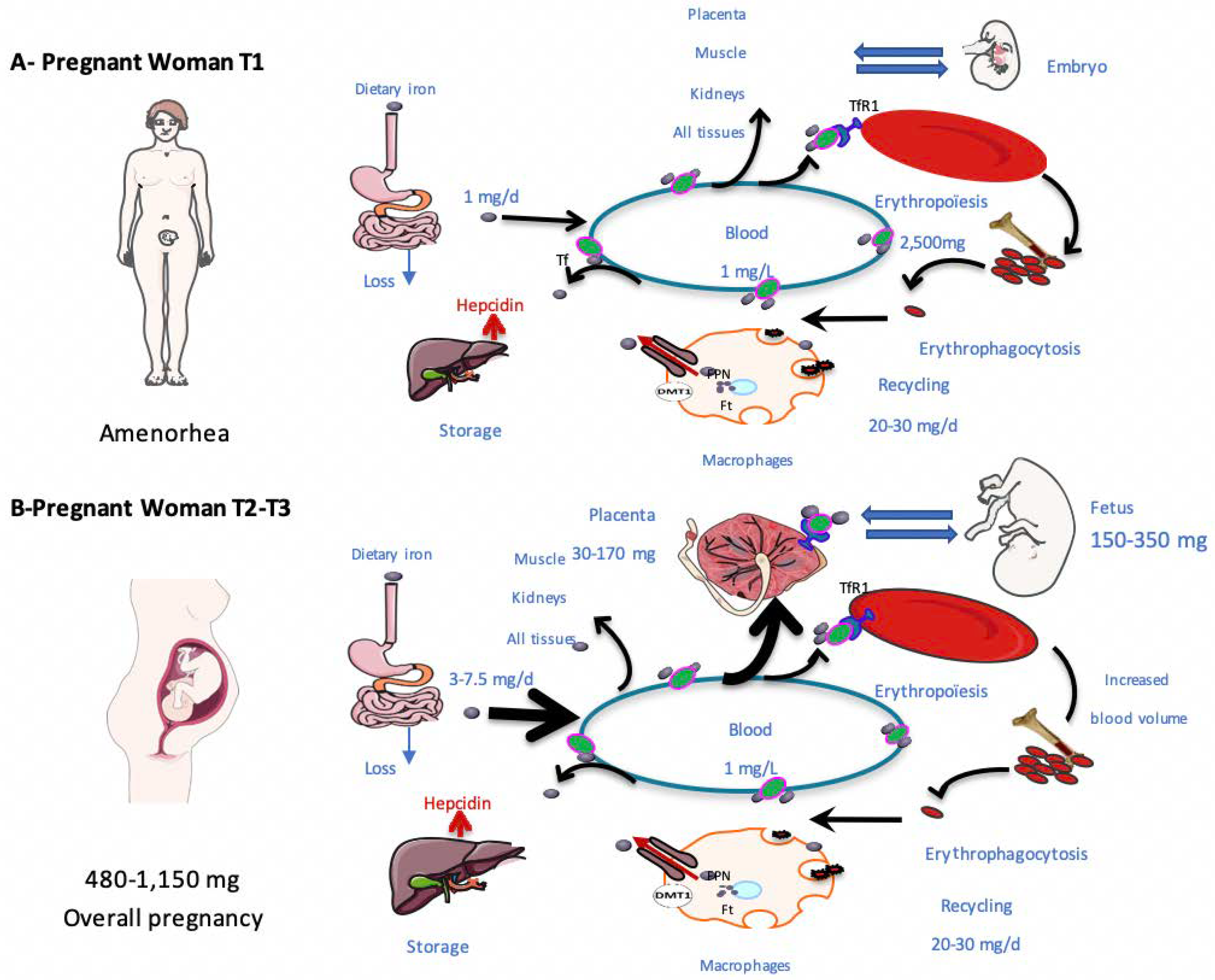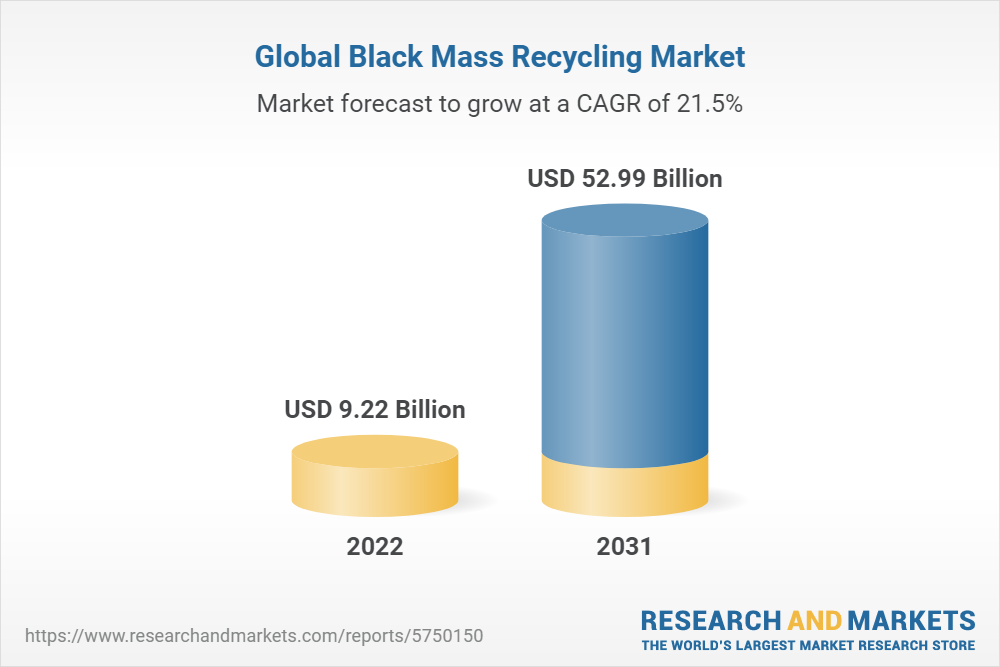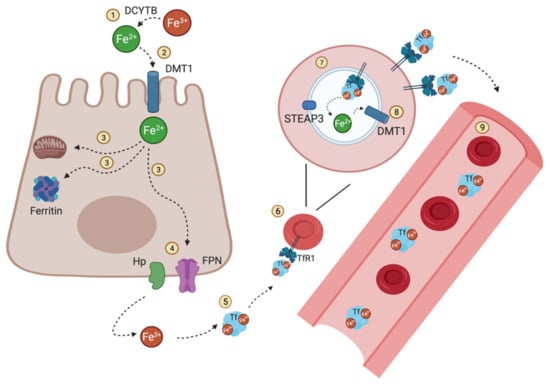Iron recycling ensures the turnover of the body iron pool
$ 11.99 · 5 (614) · In stock

Download scientific diagram | Iron recycling ensures the turnover of the body iron pool. Approximately 90% of iron needs for erythropoiesis are met by internal iron recycling from aged red blood cells. This task is accomplished by macrophages, predominantly Kupffer cells (KCs) in the liver and red pulp macrophages (RPMs) in the spleen. When erythrocytes age (in approximately 120 days in humans), their elasticity is reduced, which mediates their trapping in iron-recycling organs and further engulfment by KCs and RPMs. from publication: The Multiple Facets of Iron Recycling | The production of around 2.5 million red blood cells (RBCs) per second in erythropoiesis is one of the most intense activities in the body. It continuously consumes large amounts of iron, approximately 80% of which is recycled from aged erythrocytes. Therefore, similar to the | Iron Homeostasis, Hepcidin and Iron | ResearchGate, the professional network for scientists.

Antioxidants, Free Full-Text

Katarzyna MLECZKO-SANECKA, Laboratory Head

The molecular and metabolic landscape of iron and ferroptosis in cardiovascular disease

IJMS, Free Full-Text

Katarzyna MLECZKO-SANECKA, Laboratory Head

A Red Carpet for Iron Metabolism - ScienceDirect

Intravenous iron therapy with ferric carboxymaltose results in a rapid and sustained rise in myocardial iron content through a non-canonical pathway: a translational study

Metabolites, Free Full-Text

IJMS, Free Full-Text

A Red Carpet for Iron Metabolism - ScienceDirect

Black Mass Recycling Market - A Global and Regional Analysis: Focus on Application, Battery Source, Technology, Recovered Metal, and Region - Analysis and Forecast, 2022-2031

Genes, Free Full-Text

IJMS, Free Full-Text